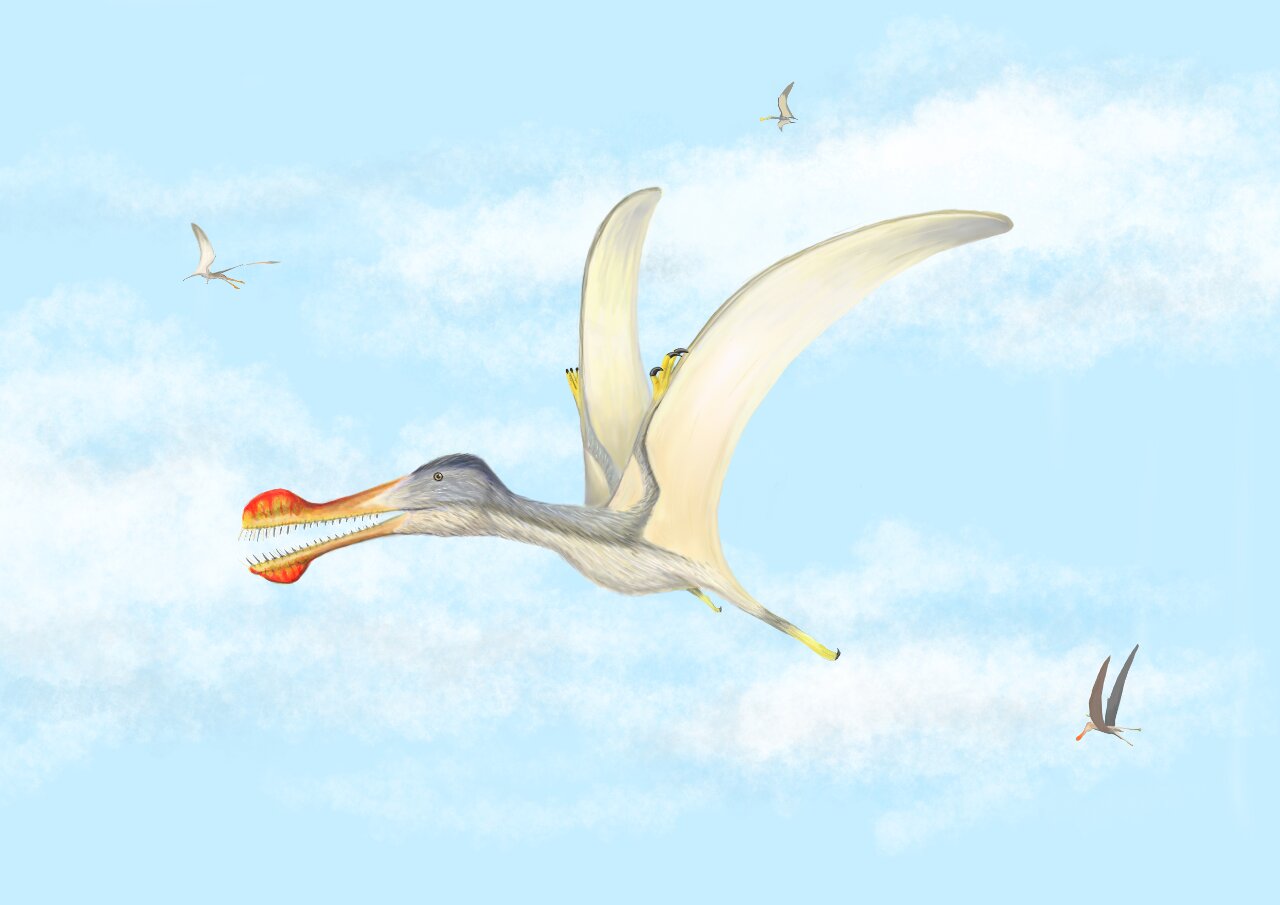The world of prehistoric creatures never fails to surprise us with its diversity and the unveiling of mysteries hidden in the sands of time. Recently, an international team of scientists led by Baylor University made a groundbreaking discovery in Africa—a treasure trove of three new species of toothed pterosaurs, ancient flying reptiles that ruled the skies during the Cretaceous period around 100 million years ago.
Pterosaurs, often referred to as pterodactyls, were remarkable creatures that soared above a world teeming with predators and prey. These newly identified pterosaurs inhabited an ancient river ecosystem in Africa, alongside a plethora of life forms including fish, crocodiles, turtles, and various predatory dinosaurs. The significance of these discoveries lies not only in their novelty but also in their contribution to our understanding of the evolutionary history of Africa during the reign of dinosaurs.
Lead author Megan L. Jacobs, a doctoral candidate in geosciences at Baylor University, expressed her excitement about the rarity of pterosaur remains, particularly in Africa. Most pterosaur fossils have been unearthed in regions like Europe, South America, and Asia, making these African discoveries all the more exceptional. The findings, published in the esteemed journal Cretaceous Research, shed light on the unique characteristics of African pterosaurs and their similarities to those found on other continents.
What makes these toothed pterosaurs fascinating is their size and adaptability. Despite their large wingspans of around 10 to 13 feet, these creatures were incredibly lightweight due to their bones being thin and filled with air, reminiscent of modern birds. This anatomical adaptation enabled them to achieve impressive sizes while retaining the ability to take off effortlessly and glide through the ancient skies of Africa.
Pterosaurs were skilled hunters, using their large spike-like teeth to snatch prey while in flight. The abundance of fish in their ecosystem provided ample food sources for these aerial predators. Interestingly, fossil evidence suggests that these toothed pterosaurs had significant mobility, with some specimens showing evidence of transcontinental flights between South America and Africa. This behavior mirrors the long-distance foraging seen in present-day birds like condors and albatrosses.
The discovery of these pterosaurs was made possible by fossil miners in the village of Beggaa, located near Erfoud in southeast Morocco. These dedicated villagers meticulously excavate fossils from the Kem Kem beds, a fossil-rich layer of coarse sand. The fossils, primarily consisting of jaw fragments with teeth, offer valuable insights into the diversity and distribution of pterosaurs during the Cretaceous period.
Among the newly identified species is Anhanguera, previously known only from Brazil, and Ornithocheirus, previously found in England and Middle Asia. The inclusion of these species in the African pterosaur repertoire expands our knowledge of their global distribution and evolutionary adaptations. This discovery also highlights the collaborative efforts between local communities, fossil collectors, and scientists in uncovering and preserving Earth’s ancient treasures.
The significance of these findings extends beyond scientific curiosity. They contribute to our understanding of ancient ecosystems, species diversity, and the interconnectedness of life throughout Earth’s history. The specimens unearthed in Morocco will find their place in museums, enriching our collective knowledge of the prehistoric world and inspiring future generations of researchers and enthusiasts.
Source: Baylor University
